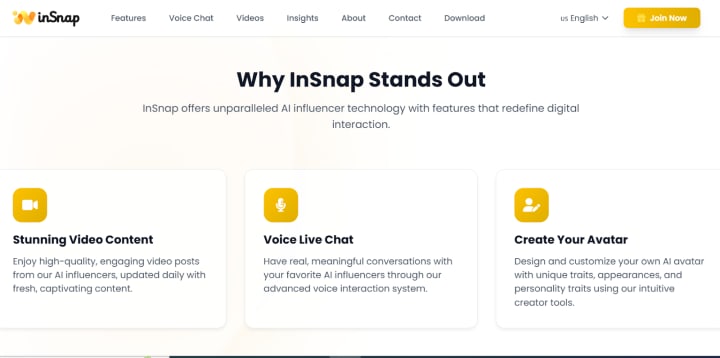In the fast-paced world of business visuals, a critical question is emerging: should you rely on the powerful AI capabilities of platforms like insnapAI, or stick with the proven expertise of traditional human designers? There's no one-size-fits-all answer, but understanding the strengths, weaknesses, and ideal applications of each approach is crucial for making informed, cost-effective decisions that align with your specific business goals and resources.
Speed & Scalability: Meeting the Content Tsunami
The sheer volume of visual content required today is staggering. InsnapAI excels in this arena. Need hundreds of product images edited overnight? AI can handle batch background removal, color correction, and enhancement in minutes. Generating dozens of personalized ad variants for A/B testing? InsnapAI can dynamically alter scenes based on prompts at unprecedented speed. Traditional design, while meticulous, simply can't match this velocity for high-volume, repetitive tasks. If your business thrives on rapid iteration, constant social media updates, or managing massive e-commerce catalogs, AI's speed and scalability are transformative advantages.

Creative Depth & Strategic Branding: The Human Touch
Where traditional design remains unparalleled is in deep creative strategy and complex brand development. Crafting a unique brand identity, developing intricate packaging, telling a nuanced visual story in a campaign, or solving highly abstract communication challenges requires human intuition, cultural understanding, and strategic thinking. Designers bring years of experience, artistic sensibility, and the ability to translate complex business objectives into original, emotionally resonant concepts. For foundational branding, high-stakes campaigns, or projects demanding truly unique artistic vision, the human designer's depth is irreplaceable.
Cost Considerations: Budgets vs. Value
On the surface, InsnapAI often appears significantly cheaper, especially for subscription-based access versus designer hourly rates or retainers. It democratizes access to decent visuals for businesses with limited budgets. However, true cost analysis needs nuance. While AI is cost-effective for bulk edits and simple graphics, complex, high-value projects handled poorly by AI might require expensive rework or fail to achieve strategic goals, ultimately costing more. Traditional design commands a higher price tag but delivers bespoke solutions and strategic value. Consider the type of work: high-volume, lower-complexity tasks favor AI cost-wise; high-impact, strategic projects justify the investment in human expertise.
Complexity & Nuance: Handling the Intricate
AI has made leaps in understanding images, but it still struggles with highly complex compositions, subtle emotional cues, intricate technical illustrations, or maintaining absolute consistency across a multi-faceted brand system requiring deep contextual understanding. Removing a complex object from a busy scene? AI might leave artifacts. Needing an illustration depicting a specific, abstract concept? A designer interprets the brief creatively. Traditional designers excel at managing intricate details, ensuring pixel-perfect execution, and navigating the subtle nuances that make visuals feel truly polished and intentional, especially for high-fidelity outputs like print or premium digital experiences.
Consistency & Control: Maintaining Your Brand Voice
Both approaches offer paths to consistency, but differently. InsnapAI can enforce basic consistency through preset styles, batch processing, and template application – excellent for maintaining visual coherence in social media feeds or product galleries. However, ensuring that consistency aligns perfectly with evolving brand strategy and nuanced voice requires human oversight. Traditional designers act as brand guardians, deeply understanding the guidelines and applying them with judgment and adaptability across diverse applications. For businesses where brand perception is paramount, human designers provide a higher level of strategic control and nuanced consistency.

The Ideal Scenario: A Hybrid Powerhouse
The most forward-thinking businesses aren't choosing one or the other; they're leveraging both strategically. Use InsnapAI to handle the heavy lifting: bulk image editing, generating initial concept variations, creating personalized ad assets at scale, and producing quick social graphics. Free up your human designers (whether in-house or freelance) from these time-consuming tasks. Redirect their expertise towards high-level strategy, complex creative projects, brand development, art direction, and refining/overseeing the AI-generated outputs. This hybrid model maximizes efficiency, scales production, maintains quality and strategic depth, and optimizes your budget.
Future-Proofing Your Visual Strategy
The landscape is evolving rapidly. InsnapAI and similar tools will only get more sophisticated, handling greater complexity. However, the unique value of human creativity, strategic thinking, and emotional intelligence won't be replicated by algorithms anytime soon. The winning strategy involves embracing AI as a powerful productivity and ideation tool within your workflow, while continuing to value and strategically deploy human design talent for the high-level thinking and complex execution that drives true brand differentiation and resonance. Assess your specific needs project-by-project, and build a flexible approach that harnesses the best of both worlds.




Comments